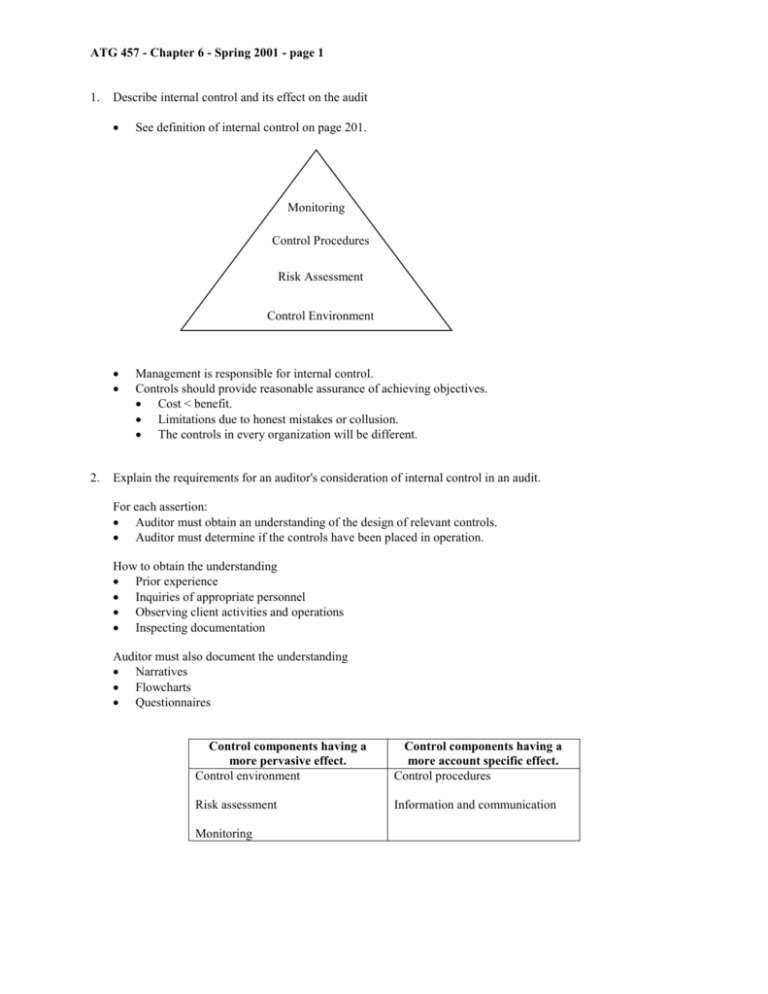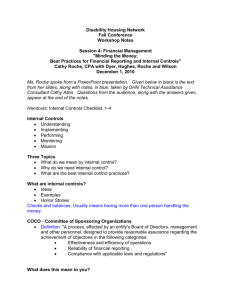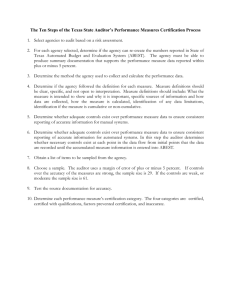Consideration of Internal Control
advertisement

ATG 457 - Chapter 6 - Spring 2001 - page 1 1. Describe internal control and its effect on the audit See definition of internal control on page 201. Monitoring Control Procedures Risk Assessment Control Environment 2. Management is responsible for internal control. Controls should provide reasonable assurance of achieving objectives. Cost < benefit. Limitations due to honest mistakes or collusion. The controls in every organization will be different. Explain the requirements for an auditor's consideration of internal control in an audit. For each assertion: Auditor must obtain an understanding of the design of relevant controls. Auditor must determine if the controls have been placed in operation. How to obtain the understanding Prior experience Inquiries of appropriate personnel Observing client activities and operations Inspecting documentation Auditor must also document the understanding Narratives Flowcharts Questionnaires Control components having a more pervasive effect. Control environment Control components having a more account specific effect. Control procedures Risk assessment Information and communication Monitoring ATG 457 - Chapter 6 - Spring 2001 - page 2 3. Define tests of controls and explain how an auditor uses them to assess control risk. 4. 5. Definition of tests of controls - see p. 221. As the assessed level of control risk drops for a particular assertion, the auditor must perform a greater amount of tests of controls. Procedures for testing controls Inquiries Inspecting documents and records. Observing entities activities. Reperformance. Professional judgement is used to determine the nature, timing, and extent of control testing. Review documentation requirements on page 227. Explain the requirements for the auditor's communication of reportable conditions related to internal control. (SAS No. 60) The auditor is not required to search for deficiencies in internal control. However, these may be found. This SAS describes how the auditor should report these deficiencies. What can be reported: Problems not considered reportable conditions. Reportable conditions. Material weaknesses. Suggestions for corrective action. How to report: Oral communication Document in working papers. Written communication See p. 233 for elements of the report. Auditor should not say that no reportable conditions were noted. Auditor may say that no reportable conditions are a material weakness. Explain the requirements for SAS No. 65, The Auditor's Consideration of the Internal Audit Function in an Audit of Financial Statements. Page 230 lists 3 ways the internal auditors may affect the nature, extent, and timing of the external auditor's work. When relying on the work of the internal auditors. Assess their competence. Evaluate and test work of the internal auditor. Do not delegate the more "sensitive" areas of the audit to the internal auidtors: Risks assessment. Materiality decisions. Accounts with subjective balances. The flowchart on page 232 summarizes the process for using internal auditors in the external audit process.







